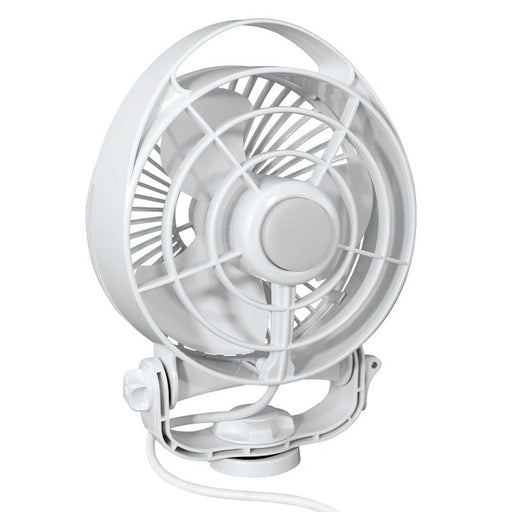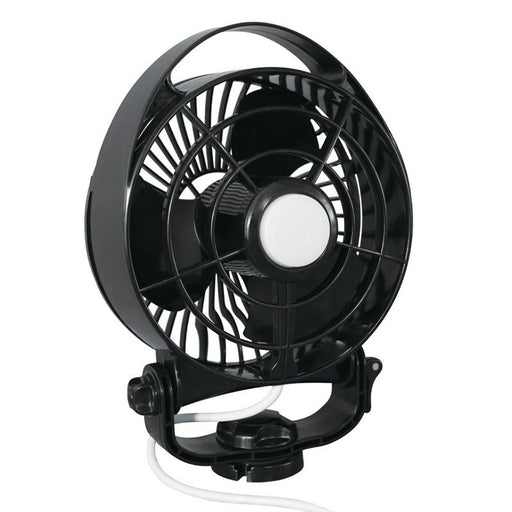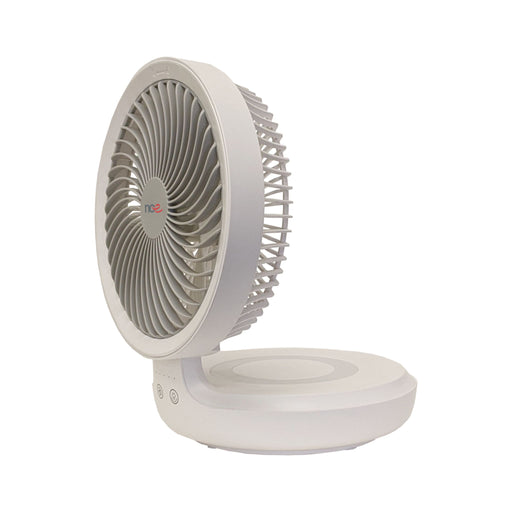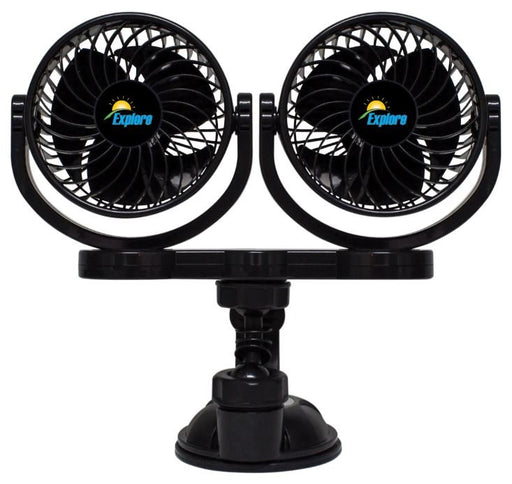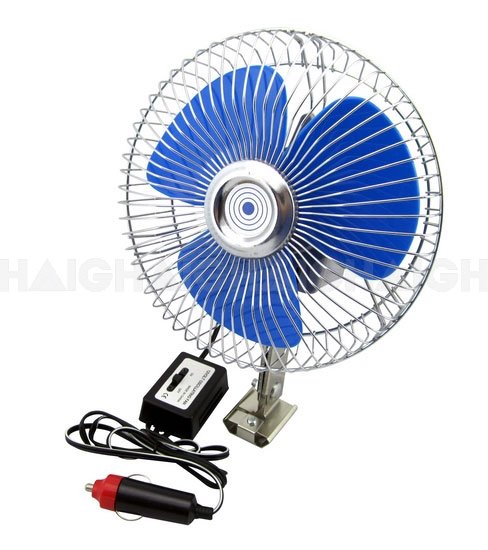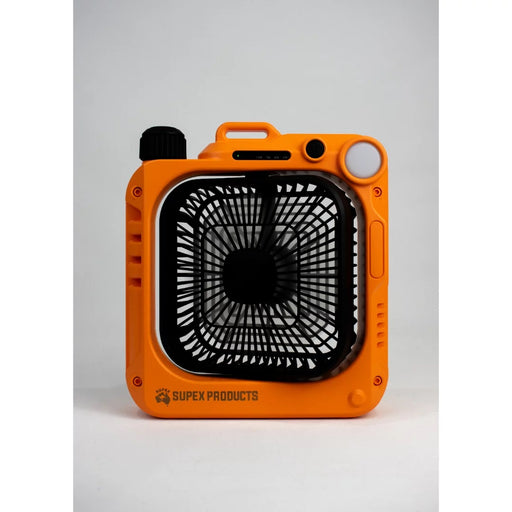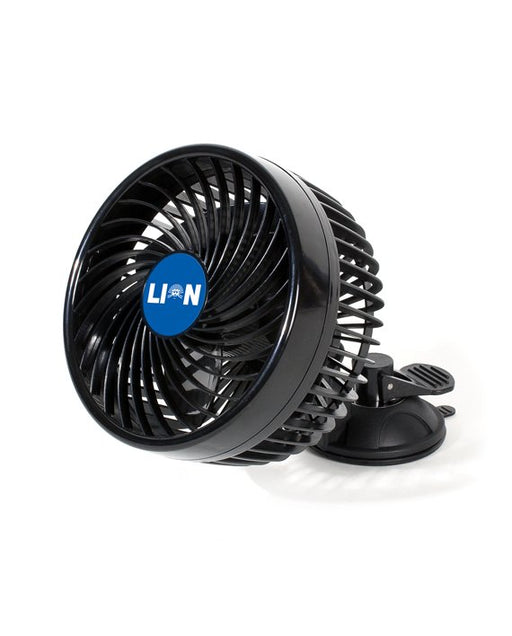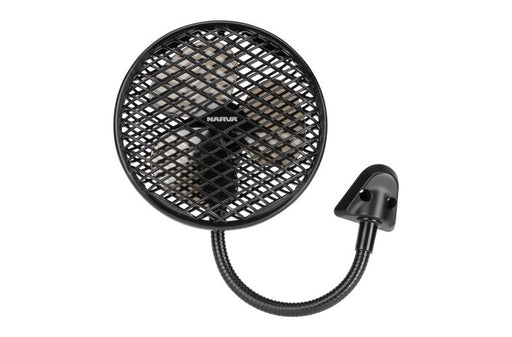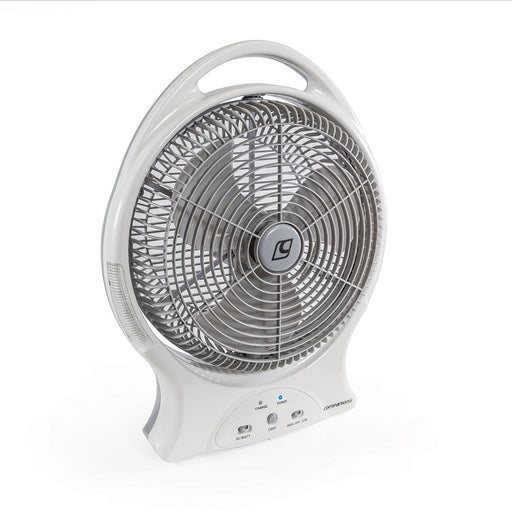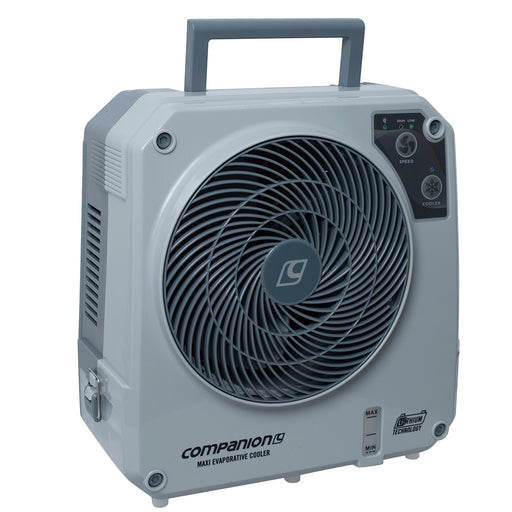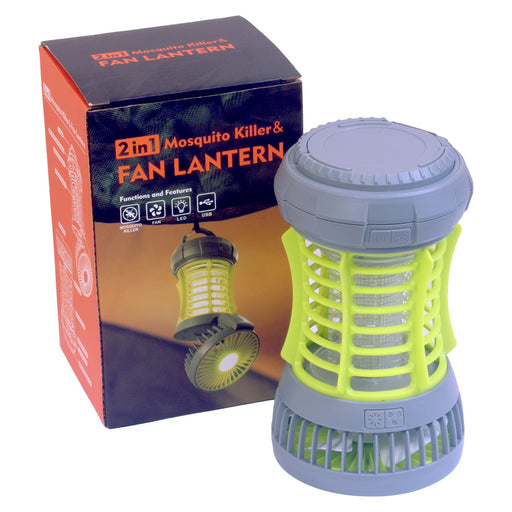How 12V Caravan Fans Work
Powered by Your Caravan’s 12V System, a 12V fan runs on the same 12-volt DC electrical system that powers your caravan or RV’s lights and appliances. This means you can plug it into a 12V socket (cigarette lighter style outlet) or hard-wire it into your electrical system without needing any mains power or inverters. The fan’s motor uses the 12V supply to spin its blades and create airflow, converting electrical energy from your battery into a cooling breeze.
Efficient DC Motors
Most 12V fans use efficient DC motors that are designed for low power draw, so they won’t quickly drain your battery. For example, many quality caravan fans draw only about 0.2–0.5 amps on their higher settings, which is just a few watts. Despite the low energy consumption, these fans can move a surprising amount of air to keep you cool.
12V Compact and Safe Design
12V fans are generally compact in size and often made with durable, impact-resistant plastic for safety. The blades are usually enclosed in a protective grille to prevent any accidents or damage. Many models are designed to be mounted securely (on a wall, ceiling or with suction cups) or used as portable units, so you can direct the airflow exactly where you need it.
Fan Installation and Use
Setting up a 12V caravan fan is typically straightforward. Portable models simply plug into a 12V outlet and can be moved around as needed. Fixed models often come with mounting brackets or suction bases for installation on a wall or flat surface. Many fans come with long power cords (e.g. 2.5m cables) to give you flexibility in placement. Once connected to power, you operate the fan with its onboard controls or a remote (if provided). Some premium fans even have auto-sensing circuitry to work with both 12V and 24V systems, adapting to different power setups automatically.
7 Key Features & Specs to Consider When Buying A 12V Fan
- Voltage & Power Draw: Check the ampere rating (A) or wattage of the fan. Lower amp draw means less battery usage. Some premium fans have 12/24V auto-sensing.
- Size & Mounting Options: Consider the fan’s size and how it mounts (wall, suction cup, clamp, etc.).
- Airflow Direction & Oscillation: Some fans are fixed-direction while others oscillate or swivel 360°, covering a larger area.
- Speed Settings & Controls: Look for multiple speed settings, remote operation, or timer functions.
- Noise Level: In small spaces, noise matters. Look for quiet or brushless motor designs if you're sensitive to fan noise.
- Durability & Build Quality: Choose fans with impact-resistant housings and high-quality motors.
- Extra Features: Some fans include LED lights, child-lock settings, or fold-flat designs to save space.
5 Benefits Of 12V Fan in Your Caravan
1. Comfort on Hot Days
A 12-volt fan provides a refreshing breeze inside your caravan, making hot summer trips much more comfortable. Unlike 240V household fans, a 12V caravan fan can run directly off your battery while you’re camping off-grid.
2. Improved Air Circulation
Fans help vent out stuffy air and bring in fresher air. This prevents condensation, dampness, and mould buildup during cooler or wet weather. Even in winter, running a fan occasionally can help distribute heat evenly and dry out any moisture.
3. Energy Efficiency
12V fans are very energy-efficient. For example, some popular caravan fans draw under 0.5A on high speed, so even running all night won’t kill your battery. This makes them a greener and cost-effective cooling solution compared to using a power-hungry air conditioner.
4. Safe and Convenient for Travel
Being low voltage, 12V fans are safe to use in confined spaces and while you’re on the move. They have sturdy mounting options, flexible necks, or fold-away designs that stay secure even on rough roads.
5. Versatile Fan Placement
Whether you need a breeze in your caravan’s dining area or airflow in bunk beds, there’s a 12V fan to suit. You can get fixed fans that swivel or oscillate to cover a larger area, or compact portable fans with suction cups or clips.
Maintenance and Care Tips
Regular Cleaning: Wipe fan blades and grille regularly with a damp cloth. Use compressed air or a vacuum to remove dust.
Check Connections: Inspect plugs and wires for damage. Replace fuses if needed.
Secure Moving Parts: Tighten mounts and check adjustable arms. Fold flat models should be folded during travel.
Avoid Overheating: Don’t block airflow. Let the fan rest if it feels hot.
Store Properly: Clean and store fans in a dry place during the off-season.










